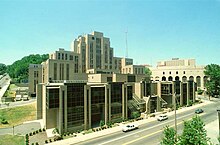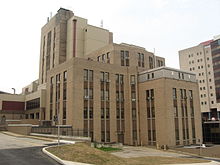
The University of Pittsburgh (Pitt) is a public state-related research university in Pittsburgh, Pennsylvania. The university is composed of 17 undergraduate and graduate schools and colleges at its urban Pittsburgh campus, home to the university's central administration and 28,391 undergraduate and graduate students. The 132-acre Pittsburgh campus includes various historic buildings that are part of the Schenley Farms Historic District, most notably its 42-story Gothic revival centerpiece, the Cathedral of Learning. Pitt is a member of the Association of American Universities, a selective group of major research universities in North America, and is classified as an R1 University, meaning that it engages in a very high level of research activity. Pitt was the third-largest recipient of federally sponsored health research funding among U.S. universities in 2018 and it is a major recipient of research funding from the National Institutes of Health. According to the National Science Foundation, Pitt spent $1.0 billion on research and development in 2018, ranking it 14th in the nation. It is the second-largest non-government employer in the Pittsburgh metropolitan area. The university also operates four undergraduate branch campuses in Western Pennsylvania, located in Bradford, Greensburg, Johnstown, and Titusville.
The University of Pittsburgh School of Dental Medicine is the dental school of the University of Pittsburgh (Pitt). It is located in Pittsburgh, Pennsylvania, United States. It is one of Pitt's six schools of the health sciences and one of several dental schools in Pennsylvania. It is closely affiliated with the University of Pittsburgh Medical Center. The School of Dental Medicine accepted 3.6% of applicants for the class of 2016, a record low for the school's entire history.

Thackeray Hall is an academic building of the University of Pittsburgh and a contributing property to the Schenley Farms National Historic District at 139 University Place on the campus of the University of Pittsburgh in Pittsburgh, Pennsylvania, United States.

Allen Hall at the University of Pittsburgh is a Pittsburgh History and Landmarks Foundation Historic Landmark and a contributing property to the Schenley Farms National Historic District. Completed in 1914 and originally serving as the home to the Mellon Institute of Industrial Research, the six story Greek Revival building designed by J. H. Giesey now serves as the home of the university's Department of Physics and Astronomy.

Gardner Steel Conference Center (GSCC) is an academic building of the University of Pittsburgh and a contributing property to the Schenley Farms National Historic District and a Pittsburgh History and Landmarks Foundation Historic Landmark.

Schenley Quadrangle is a cluster of University of Pittsburgh ("Pitt") residence halls that is a Pittsburgh History and Landmarks Foundation Historic Landmark and are contributing properties to the Schenley Farms National Historic District in Pittsburgh, Pennsylvania, United States.

Michael L. Benedum Hall of Engineering is a landmark academic building on the campus of the University of Pittsburgh in Pittsburgh, Pennsylvania, United States. The building was designed in the brutalist style by the architectural firm of Deeter, Ritchey, and Sippel and completed in 1971 at a cost of $15 million. The building was honored with both the Pennsylvania Society American Institute of Architects Honor Award and Distinguished Building Award. It was built with a gift from the Claude Worthington Benedum Foundation and funds from the General State Authority. It stands on a 1.8-acre (7,300 m2) site that was formerly occupied by the National Guard's Logan Armory.
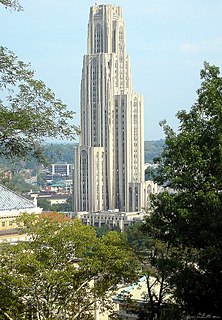
The upper campus residence halls at the University of Pittsburgh include Sutherland Hall, Panther Hall, K. Leroy Irvis Hall, the fraternity housing complex, and the Darragh Street Apartments. Among the newest residence facilities at the university, these buildings reside on the upper campus located near many of the school's athletic facilities. The upper campus resides approximately 200 feet (61 m) above the lower campus that lies along Forbes and Fifth Avenues, providing dramatic views along the hilltop and slopes. Planning for upper campus student housing originated in the late 1960s and early 1970s, but stalled due to community and political opposition until the early 1990s with opening of Sutherland Hall, the first major student residence constructed by Pitt in 29 years.

Parran Hall is the former name of an academic building on the campus of the University of Pittsburgh on Fifth Avenue in Pittsburgh, Pennsylvania, United States. The building, constructed to house the Graduate School of Public Health, was completed in 1957, and designed by Eggers & Higgins, architects of the Dirksen Senate Office Building, in the International Style with a major addition by Deeter-Ritchey-Sippel and Crump completed in 1967. The school was founded in 1948 with a $13.6 million grant from the A.W. Mellon Educational and Charitable Trust. It was originally named after Thomas Parran Jr., a former head of the United States Public Health Service at the time the Public Health Service was sponsoring the Tuskegee experiment, in which patients with syphilis were studied but did not receive treatment for the disease.

The University Club is an eight-story building of the University of Pittsburgh designed by Henry Hornbostel and completed in 1923 that is a contributing property to the Schenley Farms Historic District on the school's campus in Pittsburgh, Pennsylvania, United States. It serves as a faculty club with publicly accessible dining, banquet, and conference facilities, while the upper four floors serve as housing for the families of out-of-town hospital patients.
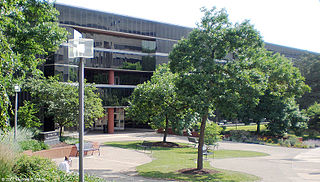
Mervis Hall is an academic building at the University of Pittsburgh in Pittsburgh, Pennsylvania, United States that houses the Katz Graduate School of Business and College of Business Administration Undergraduate Program. The building was built by the IKM/SGE partnership on the former site of Forbes Field and dedicated in 1983. The flagpole and a portion of the left and center field walls still exist just outside adjacent to the left plaza of the building. A bronze plaque indicates the portion over which Mazeroski's 1960 blast traveled.
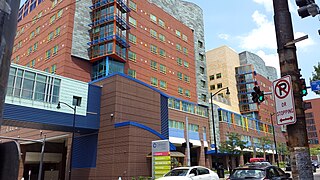
UPMC Children's Hospital of Pittsburgh (CHP), popularly known simply as "Children's", is part of the University of Pittsburgh Medical Center and the only hospital in Southwestern Pennsylvania dedicated solely to the care of infants, children, teens and young adults through around age 26. UPMC Children's also sometimes treats older adults that require pediatric care. The hospital is affiliated with the University of Pittsburgh School of Medicine and features a state-verified level 1 pediatric trauma center, one of four in the state. CHP also has a rooftop helipad for emergent transport of pediatric patients.

Lothrop Hall is a major student dormitory at the University of Pittsburgh's main campus in the Oakland neighborhood of Pittsburgh, Pennsylvania. Lothrop Hall is located adjacent to the University of Pittsburgh Medical Center (UPMC) on Lothrop Street near Fifth Avenue, this hill is often referred to as "cardiac hill" due to its steep grade and its accessibility to medical care. The Hall is made up of 14 floors, some of which are segregated by sex in each wing. Most rooms in the hall are single occupancy, with some double occupancy as well, and even some tripled on floors 2-10. The dorm houses 723 people, in addition to a resident director and 15 resident assistants.

The University of Pittsburgh, commonly referred to as Pitt, is an independent, state-related, doctoral/research university in Pittsburgh, Pennsylvania, United States. For most of its history, Pitt was a private institution until it became part of the Commonwealth System of Higher Education in 1966.

Ruskin Hall is a residence hall at the University of Pittsburgh and a contributing property to the Schenley Farms National Historic District. Constructed in 1921–22 by H. L. Stevens & Company, with an annex added in 1925–26, it is an eight-story building which is located between the Music Building and Information Sciences Building between Ruskin and Bellefield Avenues near Fifth Avenue on Pitt's main campus in the Oakland neighborhood of Pittsburgh, Pennsylvania. Ruskin Hall recently underwent a $19.4 million conversion and renovation from medical student housing into undergraduate apartment-style housing that opened in 2008.

The Fanny Edel Falk Laboratory School, or simply the Falk School, is a private kindergarten through eighth grade laboratory school of the University of Pittsburgh. It is located on the University of Pittsburgh's upper campus on Allequippa St.
The University of Pittsburgh School of Pharmacy is the graduate pharmacy school of the University of Pittsburgh in Pittsburgh, Pennsylvania, United States. Founded in 1878, it offers Doctor of Pharmacy (PharmD) and Doctor of Philosophy (PhD) degrees, as well as a residency training program. The school is one of the university's six schools of the health sciences and is ranked in the top 10 of pharmacy schools according to U.S. News & World Report.
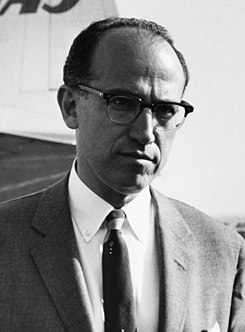
Jonas Edward Salk was an American virologist and medical researcher who developed one of the first successful polio vaccines. He was born in New York City and attended the City College of New York and New York University School of Medicine.
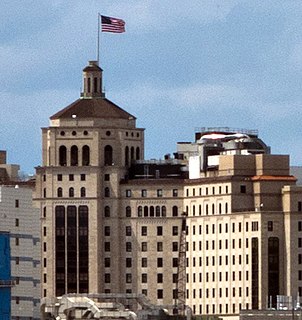
UPMC Presbyterian is a 900-bed non-profit research and academic hospital located in the Oakland neighborhood of Pittsburgh, Pennsylvania, providing tertiary care for the Western Pennsylvania region and beyond. It comprises the Presbyterian campus of the combined UPMC Presbyterian Shadyside hospital entity. The medical center is a part of the University of Pittsburgh Medical Center health system and is the flagship hospital of the system. UPMC Presbyterian also features a state verified Level 1 Trauma Center, 1 of 3 in Pittsburgh. Although UPMC Presbyterian has no pediatric services, Presby has the equipment to stabilize and transfer pediatric emergency cases to the nearby UPMC Children's Hospital of Pittsburgh.
